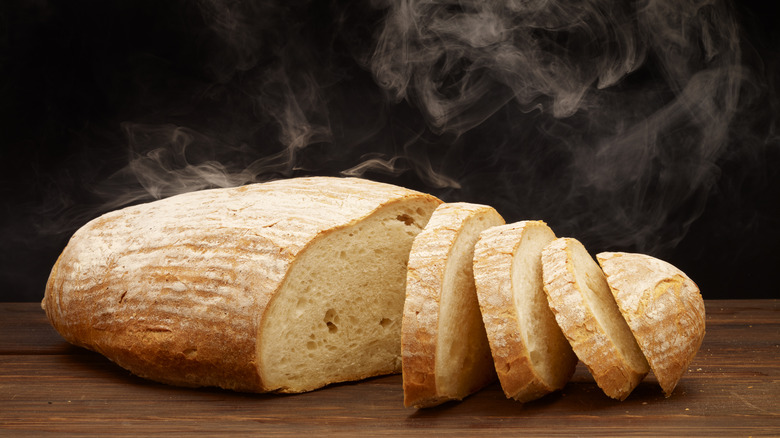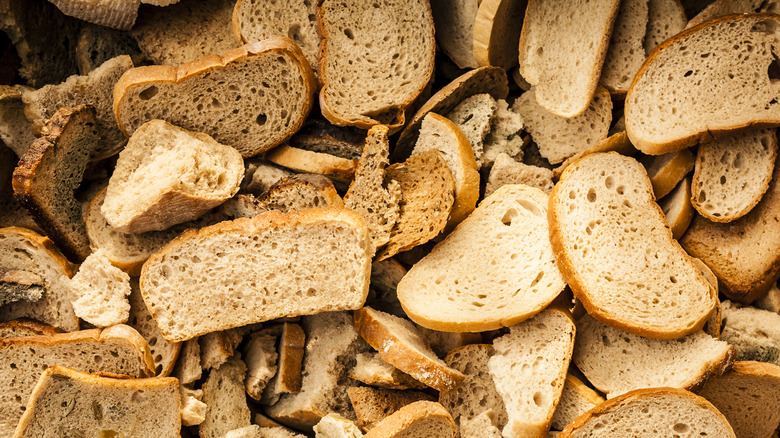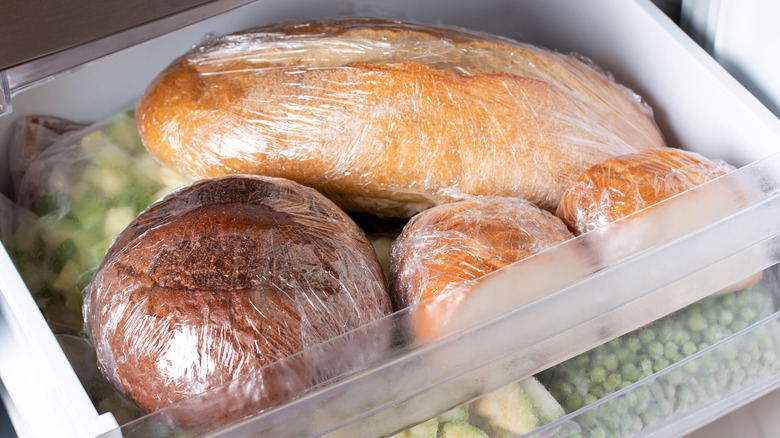Salvage Stale Bread With Just A Little Water
We've all experienced the disappointment that arises when a great loaf of bread goes stale before we can enjoy it. However, please don't assume that the loaf is completely unsalvageable, or that your only option is to discard it when this happens. Not only can you repurpose it into croutons or breadcrumbs, but you can also rejuvenate that stale bread so that it feels and tastes as fresh as the day you bought it from the farmers market. All you need is a bit of water.
It's important to note that there is a big difference between stale bread and moldy bread. While the former is salvageable, the latter is not. If your bread is moldy, there's really no saving it — toss it and don't look back. For stale bread, however, simply turn on your kitchen faucet and lightly douse the entire loaf with water, ensuring that the top, bottom, and sides are all wet. While the idea of wetting bread might seem like a meal-ruining act at first — is there anything worse than a soggy picnic sandwich? — trust the process. You don't need to soak the loaf; a quick rinse on all sides will suffice. Preheat your oven to 325 degrees Fahrenheit, and place the moistened loaf inside for five to 10 minutes, depending on its size. Once removed, the bread should have a sturdy crust and a soft, warm interior.
Why so stale?
To put it simply, bread goes stale because its internal moisture evaporates. At its most basic, bread dough consists of flour, water, salt, and yeast. When baked, the water content contributes to the bread's soft crumb. However, as your fresh loaf sits out on the counter, its moisture dissipates quickly, leading to stale, dry bread. In commercial loaves, additives are often included to prevent staleness, which is why they remain softer for a longer time. By rinsing a stale loaf with water and reheating it in the oven, you essentially rehydrate it, reviving its texture and taste.
Freshly baked and bakery-bought bread is designed to be eaten quickly due to its short shelf life. However, depending on the size of your household — and how much bread everyone consumes on a daily basis — polishing off an entire loaf before it goes stale might be unrealistic. Still, don't resign yourself to stale bread. A good first step is to store your bread in a bread box. Good bread boxes should have small holes that allow for enough air circulation to prevent mold growth, but not so much that the bread loses its moisture overnight.
The freezer is your friend
If you like to stock up on bakery loaves or bake several at home, you can preserve their freshness by wrapping them tightly in plastic and placing them in the freezer. If you prefer, you can even slice the loaves beforehand so you can remove individual slices as needed, rather than thawing the entire loaf. If you're concerned about the slices sticking together, consider freezing the bread in chunks. For example, you could cut a baguette into four equal parts before freezing, allowing you to remove just one section at a time and get multiple slices from each piece.
If you've frozen and then thawed a loaf of bread at room temperature, it should taste as soft and fresh as the day you first brought it home. However, if you're aiming for that fresh-from-the-oven experience, feel free to use the same water-revival method that you would use for a stale loaf.



